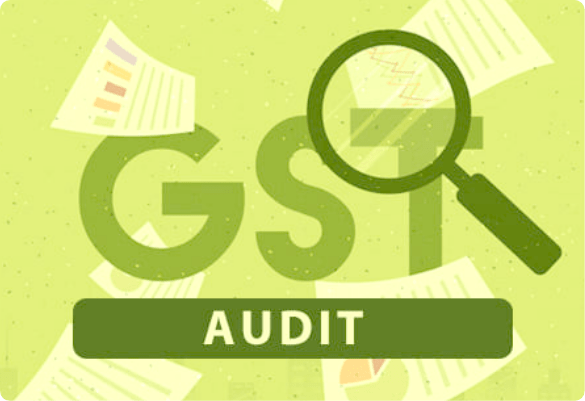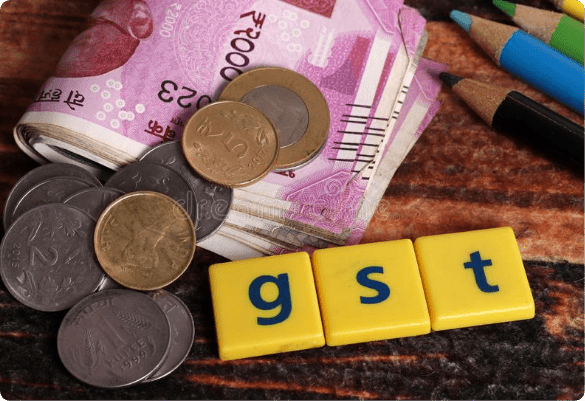In a sweeping attempt to end the issue of tax evasion in the country, the Government of India abolished the Border Commercial Tax Post and substituted it with the E-way bill system. The GST regime made it mandatory for the transporters to carry this E-way bill when they move high-value commodities. This step was initiated in 2018 with a mission of reducing tax evasion tendencies, along with ensuring tracking of goods’ movement and roping the taxpayers into strict compliance.
This article is an attempt to simplify the present E-way bill system and talks about its rules, systems, and how any eligible party can generate the E-way bill.
What is an E-way bill?
An E-way bill, or electronic bill, is a bill generated for goods movement. It is generated via the eWay bill portal and is a vital document for the transport of goods worth Rs.50,000 or more, from one site to another within the country (with the only exception of Delhi). In the case of Delhi, the minimum worth of goods is fixed at Rs 1 lakh or more. The requirement of the E-way bill is mentioned under Section 68 of the CGST Act and Rule.
How does an E-way bill work?
Every eligible party who may require to carry an E-way bill should register themselves first on the common E-way Bill Portal of the government. E-way bills are generated from https://ewaybillgst.gov.in/login.aspx. After registration, the eligible entity will generate their E-way bill, where a unique number is assigned to every relevant stakeholder in the supply chain, i.e., the recipient, the supplier and the transporter.
The validity period for an E-way bill varies with the distance and stays true to the relevant period. The relevant period indicates the date on which an E-way bill is generated, and the validity period is counted from this date. The validity period is as given below:
| Over Dimensional Cargo | Everything other than Over Dimensional Cargo | ||
| Distance | Validity Period | Distance | Validity Period |
| Below 20 Kms | 1 day | Below 200 Kms | 1 day |
| For each added 20 kms or part thereof | 1 additional day | For each added 200 kms or part thereof | 1 additional day |
For instance, if an E-way bill was generated at 4 pm on 12th March, then it will be valid till 13th March mid-night.
The validity of this bill can be further extended by the generator of the bill by either 8 hours ahead of the bill’s expiry or within 8 hours after it has expired.
When to generate an E-way bill?
The CGST Act of 2017, Rule 138, mentions that every time there is a transportation of commodities worth Rs. 50,000 or more, then each registered entity is mandated by law to generate this bill.
Specific cases demanding an E-way bill when the goods’ worth is less than Rs. 50, 000
In certain special cases, an E-way bill is required even if the consignment’s worth is less than Rs. 50,000. These are:
- Interstate handicraft item transportation.
- Interstate transportation of commodities required for the job.
Specific cases when E-way bill is unnecessary
There are certain unique cases when an E-way bill is not required. These are:
- Consignment is transported via non-motorised vehicles (e.g. animal carts).
- The consignment is transported via Customs port, air cargo complexes, or airport to CFS (Container Freight Station) or ICD (Inland Container Depot) to get Customs clearance.
- Transportation of empty cargo containers.
- Transportation of tax-exempt commodities.
- Transportation of commodities listed in the negative list, like crude petroleum, alcohol-based liquor for consumption at home, etc.
- Defence formation is responsible for consignment transportation.
- Central or State Government, or any local authority is responsible for consignment transportation via rail.
- Transit cargo, which is moved to or from Bhutan or Nepal.
Who is liable to generate an E-way bill?
An E-way bill is to be generated by:
- Every person registered under GST who are involved with the goods movement, i.e.,
- The person is linked with the goods’ supply
- The person is linked with goods apart from the supply, like branch transfer, sales return, etc.
- The person is responsible for the inward supply of goods from any unregistered party.
- Unregistered persons who are moving consignments either on their own conveyance or via any hired conveyance are also mandated to generate an E-way bill.
- Transporters who are transferring the commodities via rail, water, road, air. The transporters are mandatory to generate the bill if the consignment supplier hasn’t generated the same.
What documents will you require for E-way bill generation?
To generate an E-way bill, the documents required are:
- Consignment’s challan or invoice or Bill of Supply
- For road transportation: the Vehicle number or the Transporter ID
- For air, rail or ship transportation: the Transporter document number along with the date, Transporter ID.
What are the relevant forms to be filled to generate an E-way Bill?
For successfully generating an E-way bill, the eligible persons have to fill out the GST EWB-01 form, which has two subdivisions:
Part A: This part contains important information about the invoice, items in the invoice with its HSN code, tax rates, and information about the receiver and supplier.
Part B: This part includes the transporter’s information, like their name, ID, vehicle number, transfer mode, approximate distance, etc.
How can you register for an E-way bill?
To register for an E-way bill on the portal, multiple modes are available, which are listed below:
- Via SMS
- Via Web
- Via Android Applications
- Via API
- Via GST Suvidha providers
For each of these modes, the initial step for every user is to use the web platform and register themselves.
Process of registration via SMS
- Under the option “Registration”, choose the ‘SMS’ option
- The users will receive an OTP on their registered phone number and email id.
- Once the user enters the OTP, they will be redirected to another pop-up window, where they will select their user ID.
- The user will finally submit a request to generate their E-way bill.
Process of registration via the Web portal
Under the web portal, a user has two registration options. These are:
Taxpayer’s Registration
- Open the E-way bill portal, and look for the “Registration” option.
- Select the ‘E-way bill registration’ option, and register the first time GSTIN.
- Once the registration form pops up, the user will see certain auto-populated criteria, like their name, address, contact number etc.
- In case the details are incorrect, the user can modify the same by clicking on ‘Update from GST Common Portal’ or via the OTP method.
- The next step is to enter the user ID of the applicant’s choice, which includes about 8 to 15 alphanumeric characters. Special characters are also allowed.
- Once the validation is complete, the user will enter their preferred password and get registered on the E-way bill system.
- Now the user can use this registered name with the password to generate their E-way bill.
Unregistered Transporter’s Registration
The aforementioned options are not available to any unregistered transporter. They have to first enrol themselves on the e-way bill platform by providing credentials like,
- Business type and place
- PAN number
- Aadhaar
Once these details are verified, the system will automatically generate a Transporter ID with 15 characters. This ID is used to generate the E-way bill.
How can you generate an E-way bill?
Here are the simple steps to generate an E-way bill:
Step 1: Log in to the official platform by entering the username, password, and captcha code.
Step 2: Look for the ‘E-way bill’ option and click on ‘Generate new’.
Step 3: Enter the following details:
- Transaction type, where the user chooses ‘outward’ if they’re a supplier and ‘inward’ if they’re the recipient.
- Sub-type
- Document type, date and number
- From or To, which depends on if the user is a recipient or supplier
- Item details, like name of product, description, HSN code, unit, value, quantity, etc.
- Details of the transporter, like transportation mode, approximate distance etc.
Step 4: Once the user has submitted these details, they can submit the form. If there aren’t any errors, then the request will be processed, and an E-way bill with a unique 12 digit number will be generated. The user can print the same and carry it for transportation.
State-wise rules for E-way bill
The CGST Act gives every state an option of setting a certain threshold for an E-way bill. These rules are:
| State | E-way bill rules and threshold limit |
| Andhra Pradesh | Rs. 50,000 applicable for all taxable commodities |
| Arunachal Pradesh | Rs. 50,000 applicable for all taxable commodities |
| Assam | Rs. 50,000 applicable for all taxable commodities |
| Bihar | Above Rs. 1,00,000 |
| Chhattisgarh | Rs. 50,000 applicable for specific commodities |
| Delhi | Above Rs. 1,00,000 |
| Goa | Rs. 50,000 applicable for 22 specific commodities |
| Gujarat | E-way bill not required for commodities apart
from those which are required for job-work |
| Haryana | Rs. 50,000 applicable for all taxable commodities |
| Himachal Pradesh | Rs. 50,000 applicable for all taxable commodities |
| Jammu and Kashmir | No E-way bill needed for
transporting commodities with the geographical boundaries of the UT. |
| Jharkhand | Above Rs. 1,00,000 |
| Karnataka | Rs. 50,000 applicable for all taxable commodities |
| Kerala | Rs. 50,000 applicable for all taxable commodities |
| Madhya Pradesh | Rs. 50,000 applicable for 11 specific commodities |
| Maharashtra | Rs. 1,00,000 applicable for all taxable commodities |
| Manipur | Rs. 50,000 applicable for all taxable commodities |
| Meghalaya | Rs. 50,000 applicable for all taxable commodities |
| Mizoram | Rs. 50,000 applicable for all taxable commodities |
| Nagaland | Rs. 50,000 applicable for all taxable commodities |
| Odisha | Rs. 50,000 applicable for all taxable commodities |
| Puducherry | Rs. 50,000 applicable for all taxable commodities |
| Punjab | Rs. 1,00,000 applicable for all taxable commodities |
| Rajasthan | Rs. 1,00,000 applicable for all taxable commodities, apart from those in Chapter 24 |
| Sikkim | Rs. 50,000 applicable for all taxable commodities |
| Tamil Nadu | Rs. 1,00,000 applicable for all taxable commodities |
| Telangana | Rs. 50,000 applicable for all taxable commodities |
| Tripura | Rs. 50,000 applicable for all taxable commodities |
| Uttar Pradesh | Rs. 50,000 applicable for all taxable commodities |
| Uttarakhand | Rs. 50,000 applicable for all taxable commodities |
| West Bengal | Rs. 1,00,000 applicable for all taxable commodities |
Key Takeaway
The E-way bill put forward in the GST regime has made it possible to replace the age-old physical documents of the VAT regime with an entirely electronic one. This step enhanced the transparency of records and made it an obligation for the taxpayers to keep their records clean and up-to-date. However, if any eligible party fails to generate an E-way bill, the consequences can be severe, including hefty penalties, goods confiscation and even vehicle seizure. So, to avoid the same, ensure you register and generate your E-way bill with sufficient time at hand and avoid any negative scenarios.






